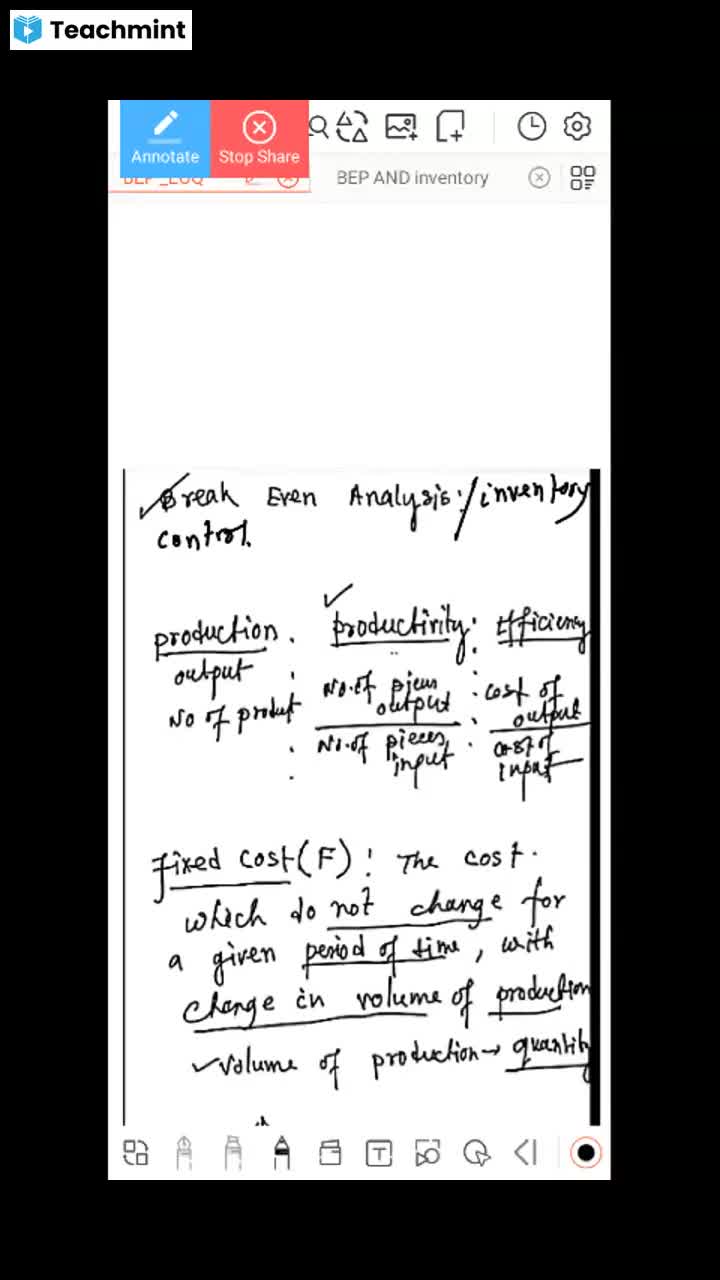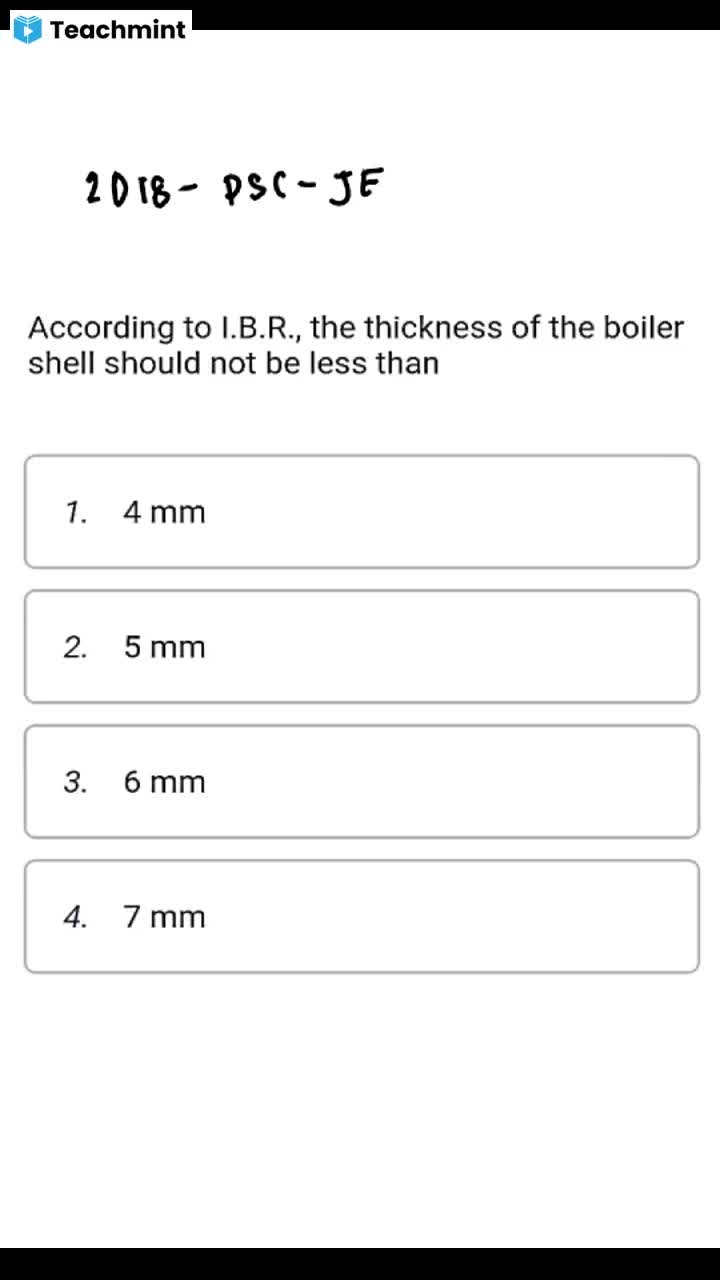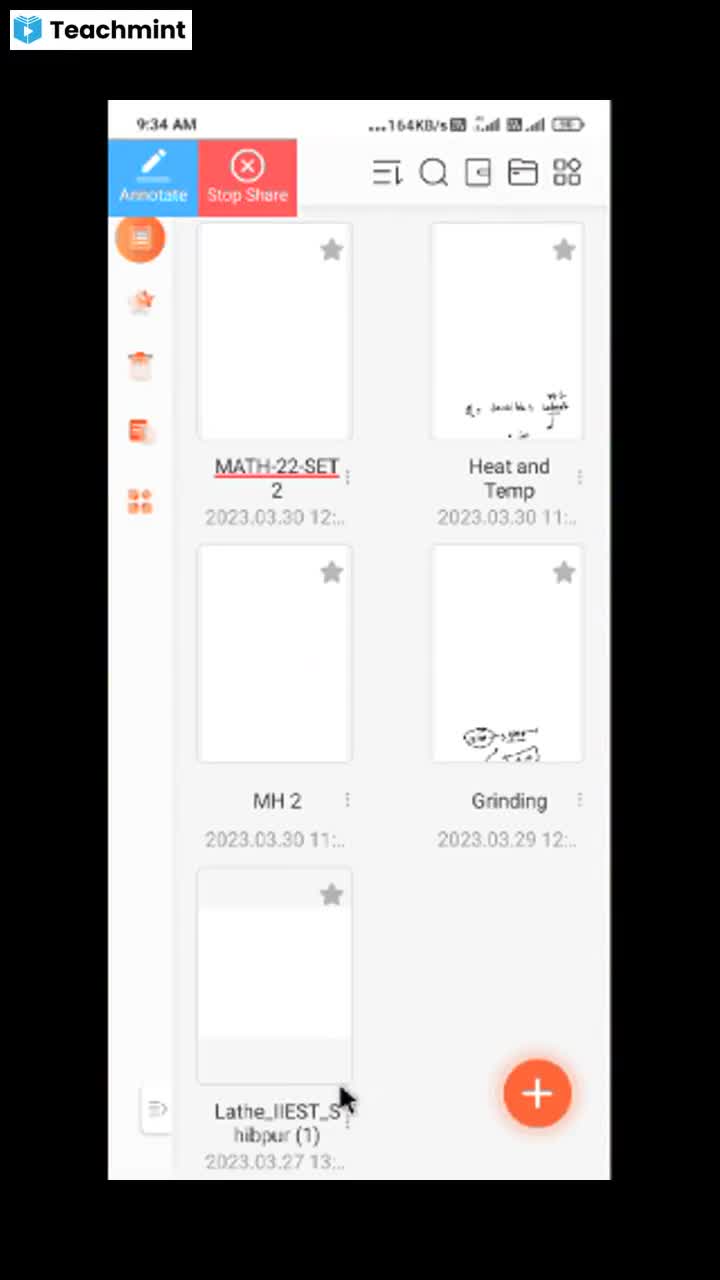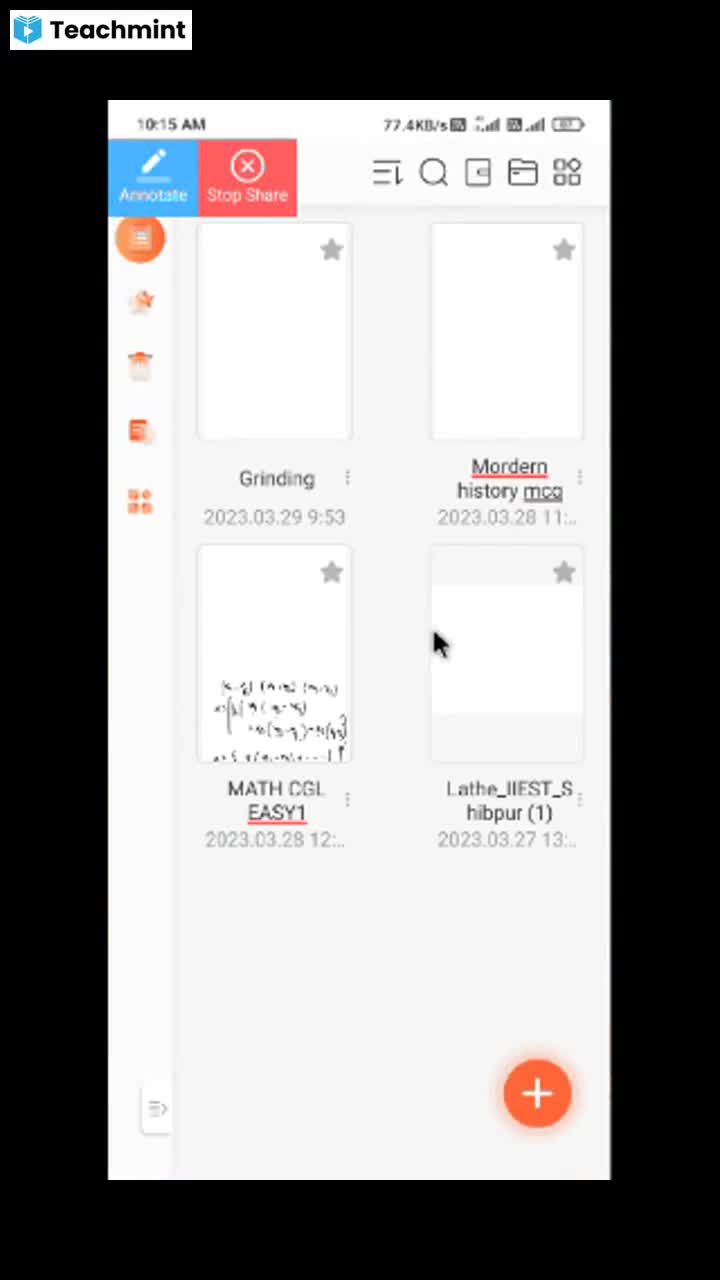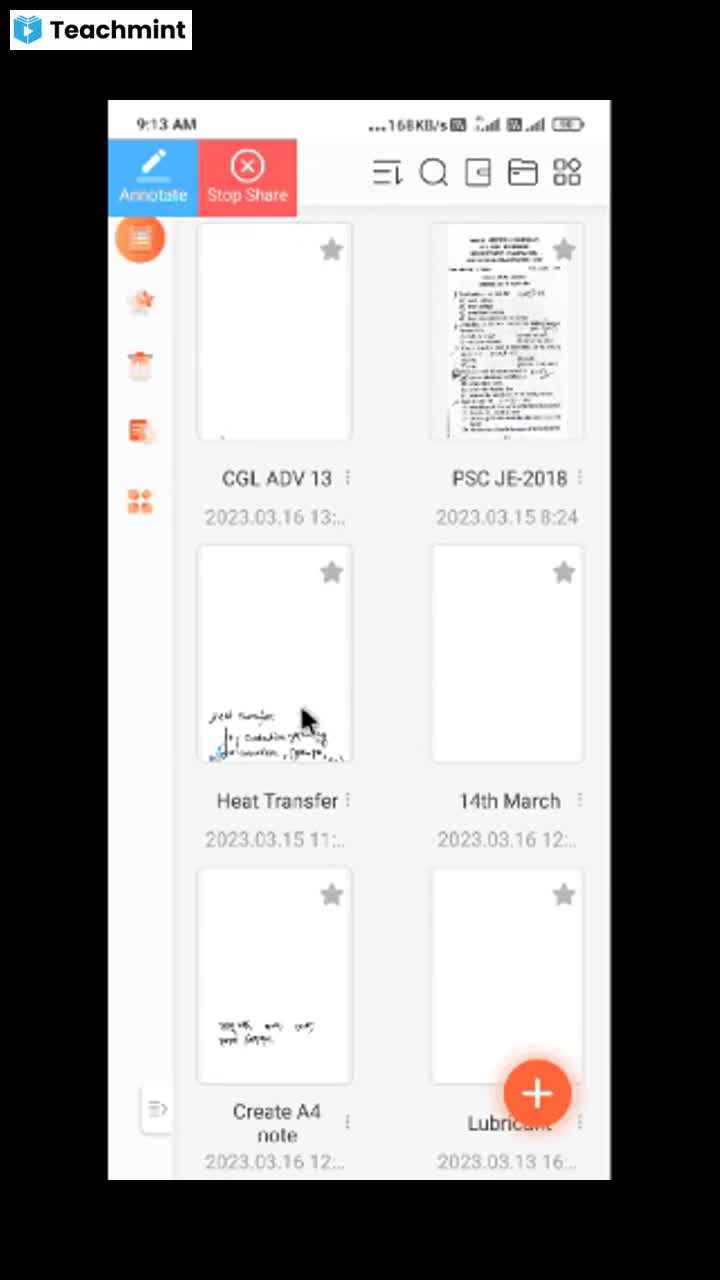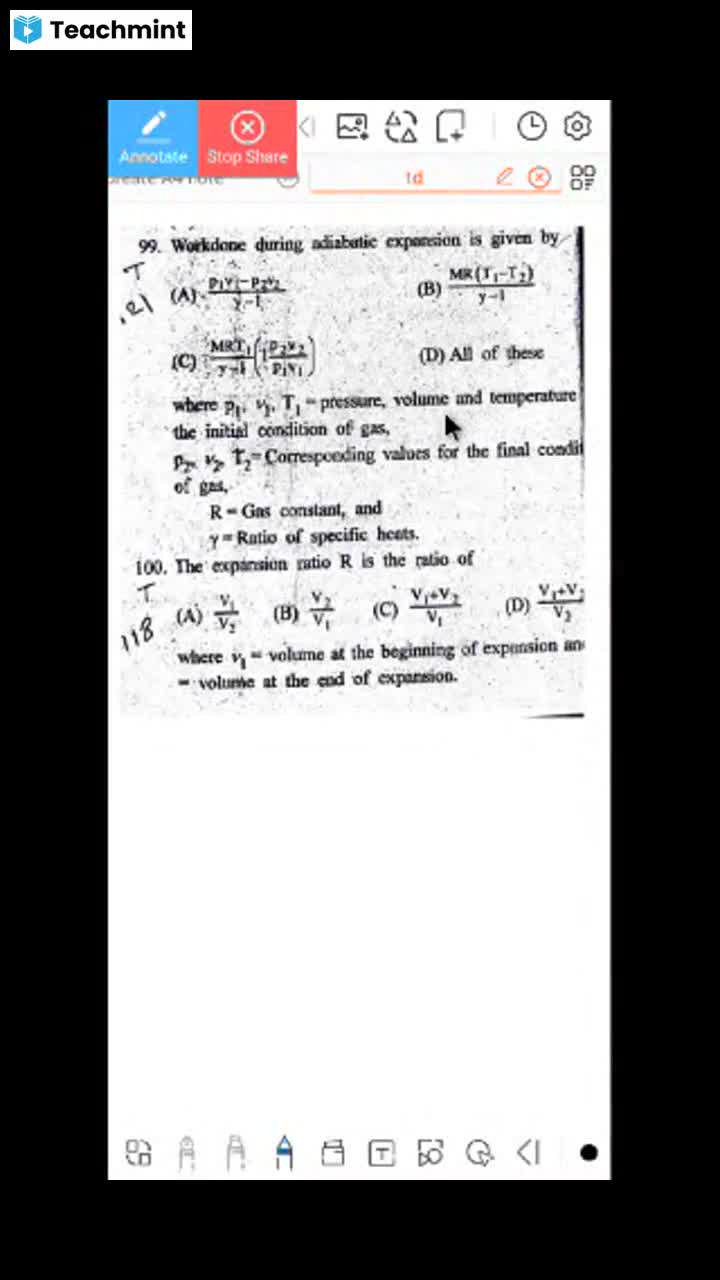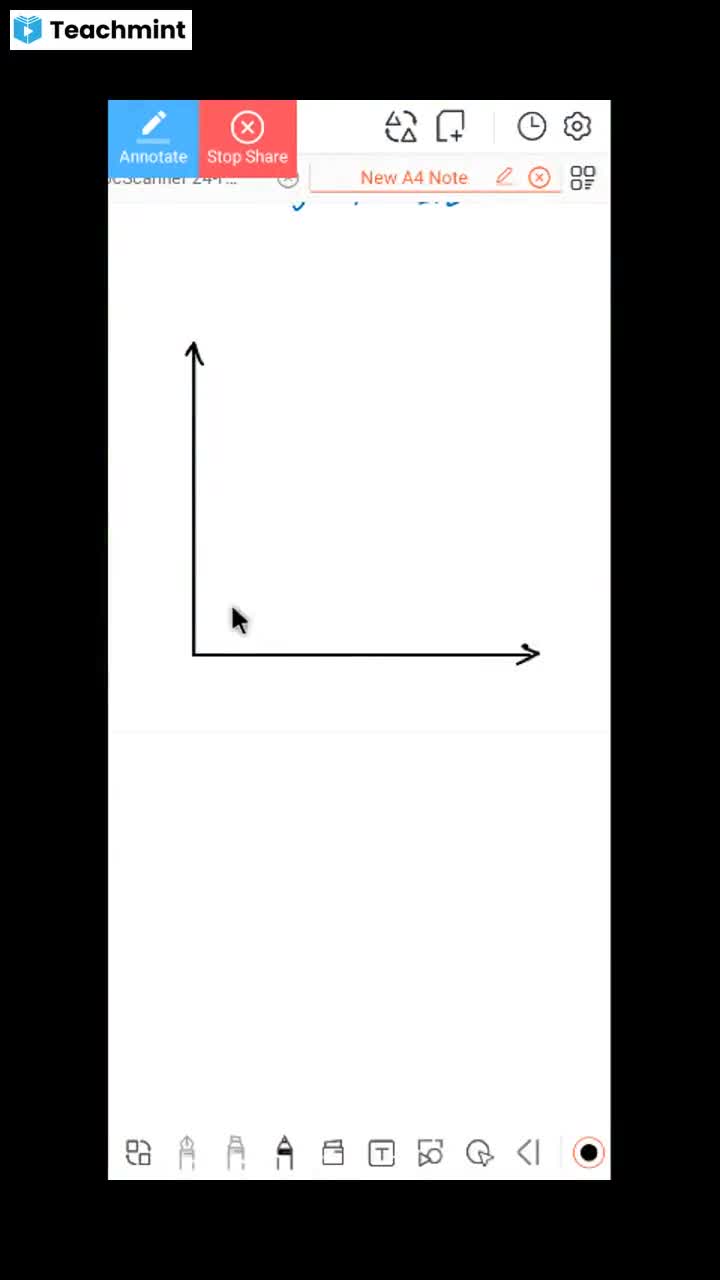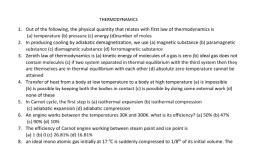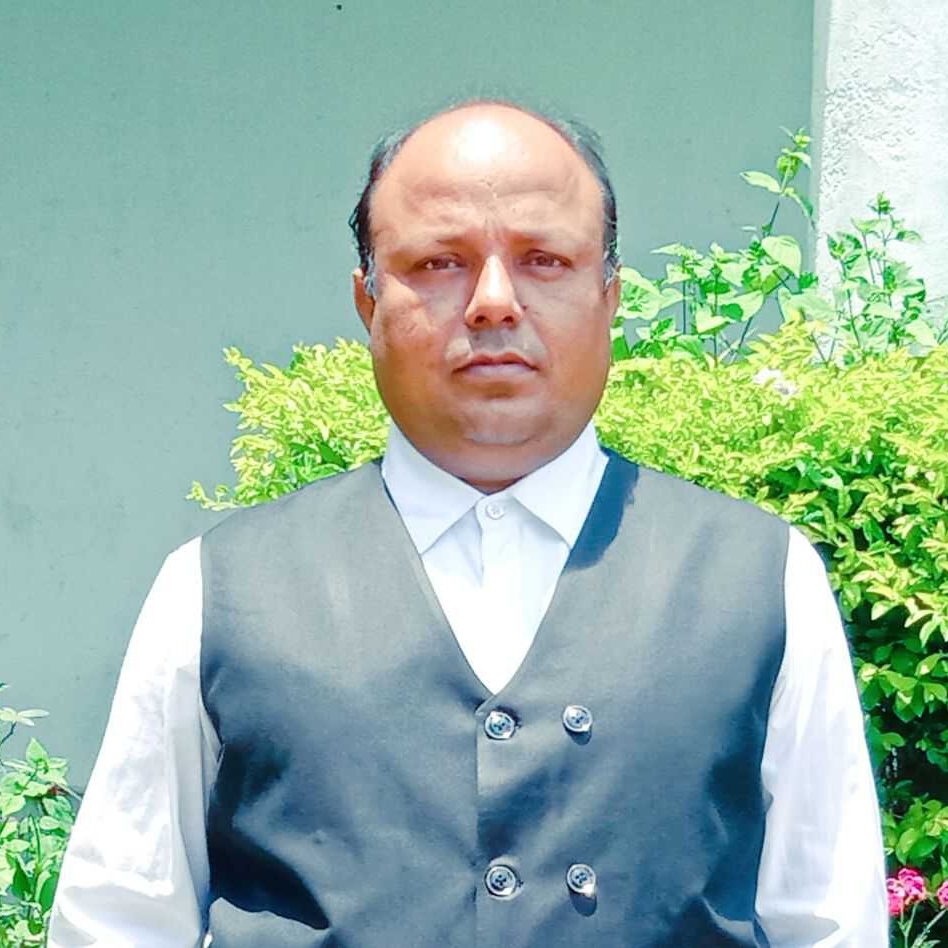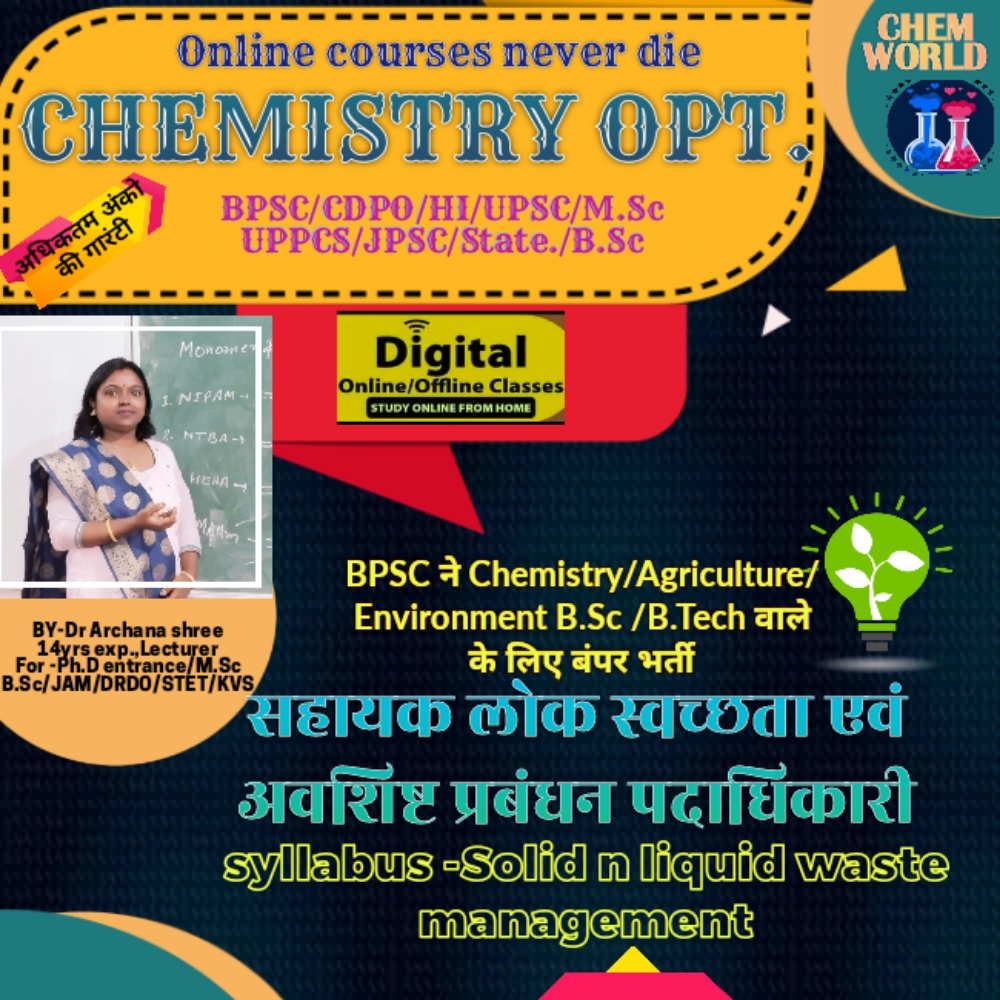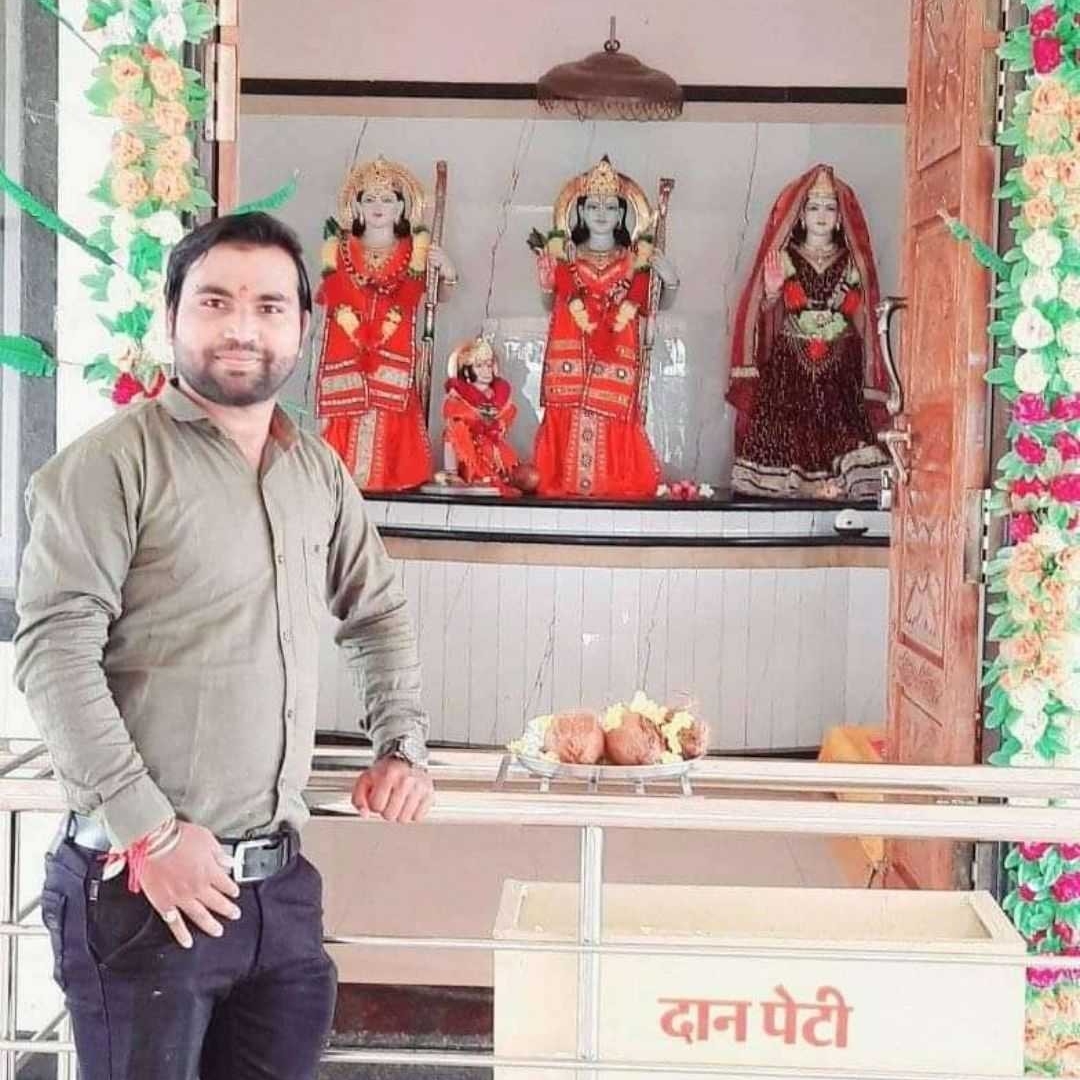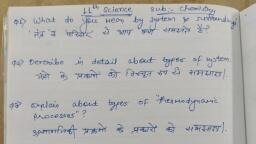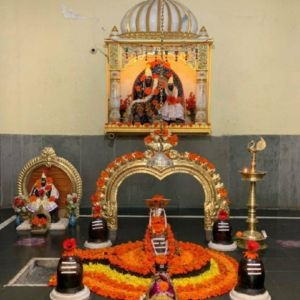Question 1 :
{tex} C _ { v } {/tex} and {tex} C _ { p } {/tex} denote the molar specific heat capacities of a gas at constant volume and constant pressure, respectively. Then
Question 2 :
The reversible expansion of an ideal gas under adiabatic and isothermal conditions is shown in the figure. Which of the following statement(s) is (are) correct?<br><img style='object-fit:contain' src="https://data-screenshots.sgp1.digitaloceanspaces.com/5e183c02ab320d104861d7a4.jpg" />
Question 3 :
Two moles of an ideal gas is expanded isothermally and reversibly from 1 litre to 10 litre at 300 K. The enthalpy change (in kJ) for the process is
Question 4 :
The figure shows the P-V plot of an ideal gas taken through a cycle {tex} A B C D A {/tex}. The part {tex} A B C {/tex} is a semi-circle and {tex} C D A {/tex} is half of an ellipse. Then,<br><img style='object-fit:contain' src="https://storage.googleapis.com/teachmint/question_assets/JEE%20Advanced/5f2becc3cb4340598d49bbbd"><br>
Question 5 :
When one mole of monoatomic ideal gas at {tex} \mathrm { T } {/tex} {tex} \mathrm { K } {/tex} undergoes adiabatic change under a constant external pressure of 1 atm volume changes from 1 litre to 2 litre. The final temperature in Kelvin would be
Question 6 :
For the PV diagram shown , for path 1-2-3, 100 J of heat is given to the system and 40 J of work is done by the system. For path 1-4-3 the work done by system is 10 J. Then - <br><img style='object-fit:contain' src='https://storage.googleapis.com/teachmint/question_assets/JEE%20Advanced/5e8b20d1dc6c090247734ddc' height='101' width='115' ><br>
Question 8 :
One mole of a monatomic ideal gas is taken along two cyclic processes {tex} \mathrm { E } \rightarrow \mathrm { F } \rightarrow \mathrm { G } \rightarrow \mathrm { E } {/tex} and {tex} \mathrm { E } \rightarrow \mathrm { F } \rightarrow \mathrm { H \rightarrow E}{/tex} Eas shown in the {tex}PV{/tex} diagram. The processes involved are purely isochoric, isobaric, isothermal or adiabatic.<br><img style='object-fit:contain' src="https://storage.googleapis.com/teachmint/question_assets/JEE%20Advanced/5f2d5b27eeeeb401408a57d9"><br>{tex} \begin{array} { |l 1|1 l| }\hline& \text { List } \mathbf { I } && \text { List } \mathbf { I I } \\\hline\text {P.} &\mathrm { G } \rightarrow \mathrm { E }&\text { 1. } & 160 \mathrm { P } _ { 0 } \mathrm { V } _ { 0 } \text { ln2 } \\\hline\text {Q.}& \mathrm { G } \rightarrow \mathrm { H } & \text { 2. } & 36 \mathrm { P } _ { 0 } \mathrm { V } _ { 0 } \text { } \\\hline \text {R.}&\text { F} \rightarrow \mathrm { H } & \text { 3. } & 24 \mathrm { P } _ { 0 } \mathrm { V } _ { 0 } \\\hline\text {S.}& \text { F } \rightarrow \mathrm { G } & \text { 4. } & 31 \mathrm { P } _ { 0 } \mathrm { V } _ { 0 } \\ \hline\end{array} {/tex}
Question 9 :
The value of {tex} \log _ { 10 } \mathrm { K } {/tex} for a reaction {tex} \mathrm { A } \rightleftharpoons \mathrm { B } {/tex} is <br><br>(Given {tex} : \Delta _ { \mathrm { r } } \mathrm { H } _ { 298 \mathrm { K } } ^ { \circ } = - 54.07 \mathrm { kJ } \mathrm { mol } ^ { - 1 } , \Delta _ { \mathrm { r } } \mathrm { S } _ { 298 \mathrm { K } } ^ { \circ } {/tex} {tex} = 10 \mathrm { JK } ^ { - 1 } \mathrm { mol } ^ { - 1 } {/tex} and {tex} \mathrm { R } = 8.314 \mathrm { JK } ^ { - 1 } \mathrm { mol } ^ { - 1 } ; {/tex} {tex} 2.303 \times 8.314 \times 298 = 5705 ) {/tex}
Question 10 :
An ideal gas is taken through the cycle {tex} A \rightarrow B \rightarrow C \rightarrow A {/tex}, as shown in the figure. If the net heat supplied to the gas in the cycle is {tex} 5 \mathrm { J } , {/tex} the work done by the gas in the process {tex} C \rightarrow A {/tex} is<br><img style='object-fit:contain' src="https://storage.googleapis.com/teachmint/question_assets/JEE%20Advanced/5f2d5afa1781467f73404b90"><br>
Question 11 :
An ideal gas is subjected to cyclic process involving four thermodynamic states, the amounts of heat (Q) and work (W) involved in each of these states<br>{tex} Q _ { 1 } = 6000 \mathrm { J } ; Q _ { 2 } = - 5500 \mathrm { J } ; Q _ { 3 } = - 3000 \mathrm { J } ; Q _ { 4 } = + 3500 \mathrm { J } {/tex} {tex} W _ { 1 } = 2500 \mathrm { J } ; W _ { 2 } = - 1000 \mathrm { J } ; W _ { 3 } = - 1200 \mathrm { J } ; W _ { 4 } = x \mathrm { J } {/tex} The ratio of the net work done by the gas to the total heat absorbed by the gas is {tex} \eta {/tex}. The values of {tex} x {/tex} and {tex} \eta {/tex} respectively are<br>
Question 12 :
The {tex} \Delta \mathrm { H } _ { \mathrm { f } } ^ { 0 } {/tex} for {tex} \mathrm { CO } _ { 2 } ( g ) , \mathrm { CO } ( \mathrm { g } ) {/tex} and {tex} \mathrm { H } _ { 2 } \mathrm { O } ( \mathrm { g } ) {/tex} are {tex} - 393.5 , - 110.5 {/tex} and {tex} - 241.8 \mathrm { kJ } mol^{- 1}{/tex} respectively. The standard enthalpy change (in {tex} \mathrm { kJ } {/tex} for the reaction {tex} \mathrm { CO } _ { 2 } ( \mathrm { g } ) + \mathrm { H } _ { 2 } ( \mathrm { g } ) \rightarrow \mathrm { CO } ( \mathrm { g } ) + {/tex} {tex} \mathrm { H } _ { 2 } \mathrm { O } ( \mathrm { g } ) {/tex} is
Question 13 :
Temperature of 1000 grams of nitrogen is raised from -20<sup>0</sup>C to 100<sup>0</sup>C at constant pressure. Given: specific heat at constant volume C<sub>v</sub> = 5 cal/mole <sup>0</sup>C and R = 2Cal/mole <sup>0</sup>C<br>
Question 14 :
AB: isothermal (T<sub>A</sub>= 300 K)<br>BC : Adiabatic (Work = 5 J)<br>CD : Constant pressure(5atm)<br>DE : Isothermal<br>EA : Adiabatic (Change in internal energy 8J) -<br><img style='object-fit:contain' src='https://storage.googleapis.com/teachmint/question_assets/JEE%20Advanced/5e8b20c160d51c030bee43af' height='116' width='174' ><br>
Question 15 :
Which of the reaction defines {tex} \Delta \mathrm { H } _ { \mathrm { f } } ^ { \circ } ? {/tex}
Question 16 :
P-V diagram of a cyclic process ABCA is as shown in figure. Choose the correct statement (s): <br><img style='object-fit:contain' src='https://storage.googleapis.com/teachmint/question_assets/JEE%20Advanced/5e8b20d560d51c030bee43c2' height='107' width='106' ><br>
Question 17 :
An ideal gas undergoes an expansion from a state with temperature T, and volume V<sub>1</sub> to V<sub>2</sub> through three different polytropic processes A, B and C as shown in the P-V diagram. If |ΔE<sub>A</sub>|, |ΔE<sub>B</sub>| and |ΔE<sub>C</sub>| be the magnitude of changes in internal energy along the three paths respectively -<br><img style='object-fit:contain' src='https://storage.googleapis.com/teachmint/question_assets/JEE%20Advanced/5e8b20d3dc6c090247734ddd' height='93' width='121' ><br>
Question 18 :
Heat is supplied to ice at a constant rate. Temperature variation with time is as shown is in fig. -<br><img style='object-fit:contain' src='https://storage.googleapis.com/teachmint/question_assets/JEE%20Advanced/5e8b20d4dc6c090247734dde' height='88' width='157' ><br>
Question 19 :
An ideal gas is taken from the state {tex} A {/tex} (pressure {tex} P {/tex}, volume {tex} V {/tex} ) to the state {tex} B {/tex} (pressure {tex} P / 2 {/tex}, volume {tex} 2 V {/tex} ) along a straight line path in the {tex} P - V {/tex} diagram. Select the correct statement (s) from the following:
Question 20 :
A gas is taken through a cyclic process. The change in internal energy along the path from c to a is - 160 J. Heat transferred along the path from a to b is 200 J and 40 J from path b to c. Then -<br><img style='object-fit:contain' src='https://storage.googleapis.com/teachmint/question_assets/JEE%20Advanced/5e8b20c4afa64601c3e36d16' height='108' width='145' ><br>

